How do I switch from 32-bit CRD to 64-bit CRD?
In this article, you will find the step-by-step process to switch from 32-bit CRD to 64-bit Software.
Before Switching...
- Please make sure you are using a 64-bit Operating System.
- Please make sure you are using Crystal Reports 64-bit.
- Please note CRD DSNs for the 64-bit will only support 64-bit ODBC Data Sources.
- Installing Microsoft Office 64-bit is recommended.
- Any third party software must be 64-bit compatible.
Download and install version 7.8 20230405 or later.
STOP: Do not install if you require the built in Fax Destination.
- In order to obtain the link to the most current build, you can either go to Resources and select Check for Updates or visit the Software Release Announcements Blog.

Preparing for the Install...
1. Stop the Scheduler
- Click the blue System bar on the far right side of the screen.
- Underneath the traffic light image, click the red Stop button.
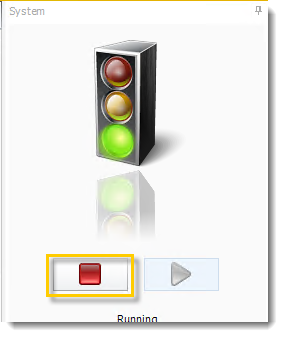
2. Perform a backup
- Go to System and select Backup.

- Select the location you want to save the backup to.
- Click OK.
3. Ensure all instances of the software are closed
- Go to File and select Exit.
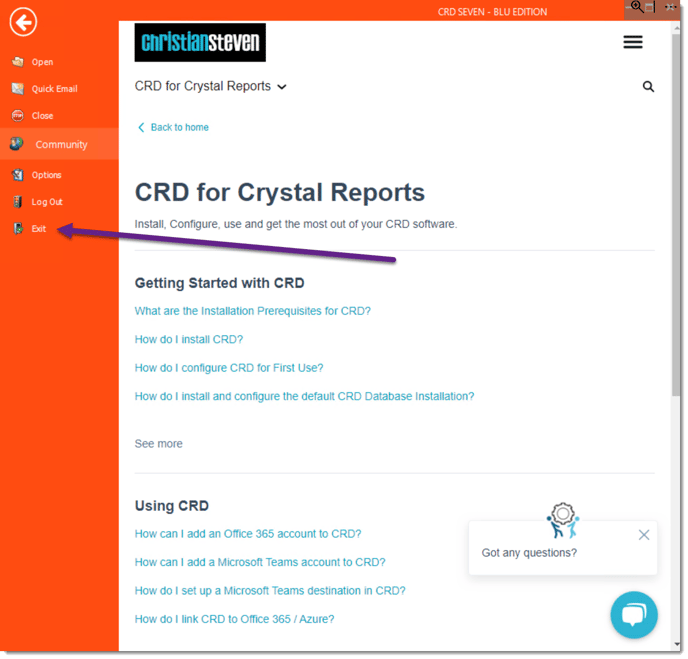
- Right-click on the Windows taskbar at the bottom of your screen.
- Click Task Manager.
- Click the Details tab.
If the Details tab is not displayed, you may have to click More Details at the bottom of the task manager window.
- Under the Name column, verify that no instances of crd.exe and crdsvcmonitor.exe appear.
If they do, click on them and select End Task in the lower right of the Task Manager window.
Installing CRD
- Double-click CRDSetup.
- Click Unzip.
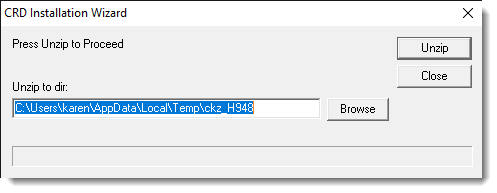
- Click Next on the Welcome message.
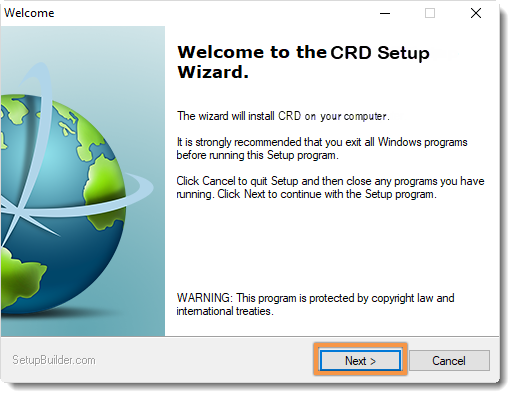
- Carefully read the License Agreement.
Once you have fully read and understood the License Agreement, check I accept the terms in the license agreement checkbox. Then, click Next.
If you do not accept the terms of the license agreement, you will not be able to proceed with the upgrading process.
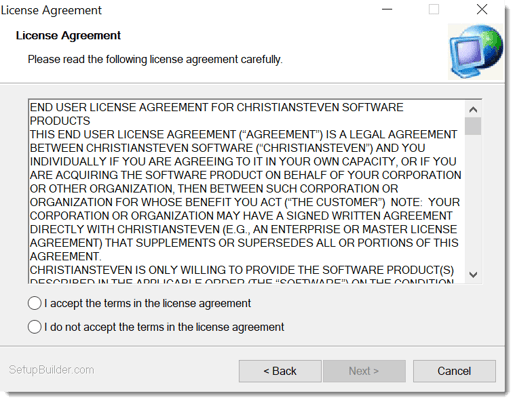
- Now, you will see the Select Destination Folder screen. You can choose to leave the default destination folder that is currently listed or select your own. Click Next.
Leaving the default destination as the destination folder is recommended.
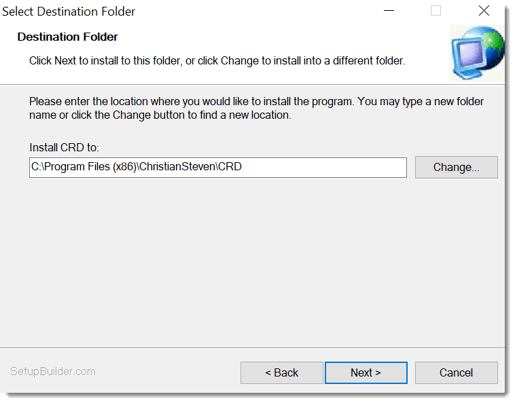
- You should now see a Ready to Install window detailing the current settings for the CRD installation. These details include the destination folder you chose in the previous step, as well as the Disk Space Requirements for the CRD installation.
- Click Next.
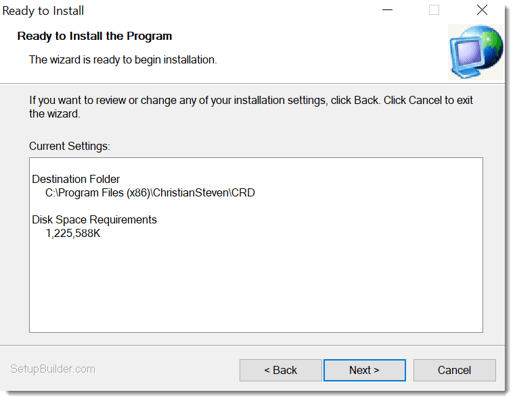
The Disk Space Requirements will vary from build to build. This is only the amount of disk space that is required for the installation/components of CRD.
- Allow the CRD installation to complete. You do not need to click anything during this process.

- When the Setup Wizard Complete screen appears, click Finish and it will start CRD.
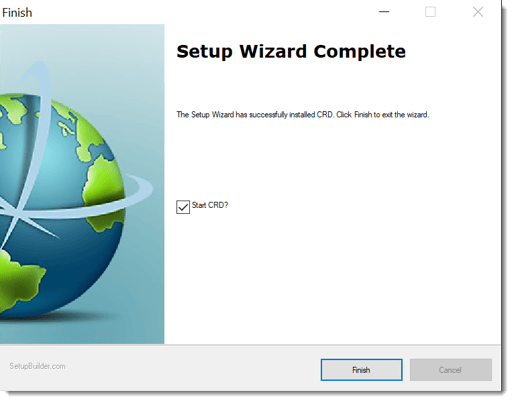
- Upon clicking Finish, select the Crystal Reports 2011 or Later 64-bit (13.0.4000)

- Click OK
- At this time, you may see a pop-up confirming that everything is in place to switch to 64-bit.
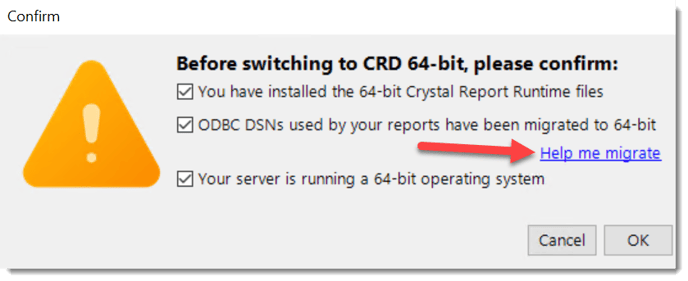
- Click Help Me Migrate if you have not yet migrated your 32-bit DSNs to 64-bit DSNs. The Registry Migration Wizard will automatically copy your selected 32 bit DSNs into the 64bit ODBC DSN's.

- Select the 32-bit DSNs you would like to copy into the 64-bit hive.
- Use the right arrow button to move the selected 32-bit DSNs to the right-hand column.
- Click Go to create the copies.
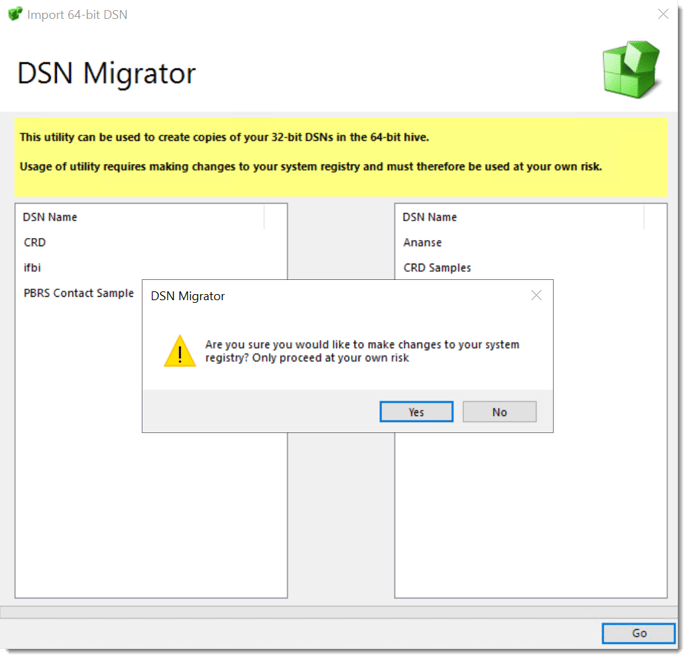
- Click Yes.
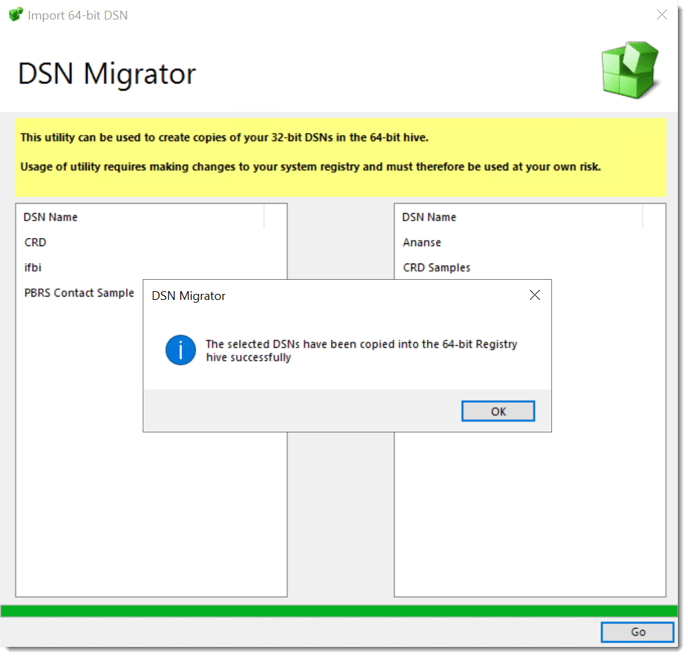
- Click OK.
- The selected DSNs have been copied into the 64-bit Registry hive successfully.
- You may now use CRD with the selected DSNs.
- The Confirm Pop-up will reappear. Confirm everything again.
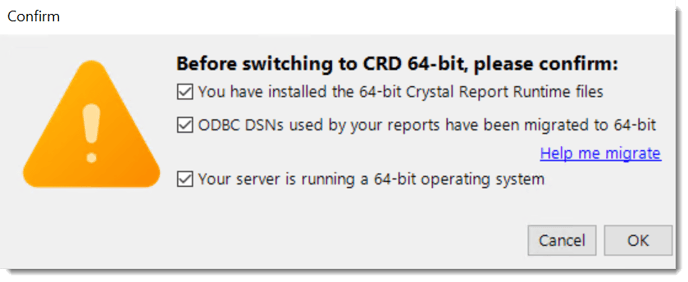
- Click OK.
- Open CRD from the Start Menu.